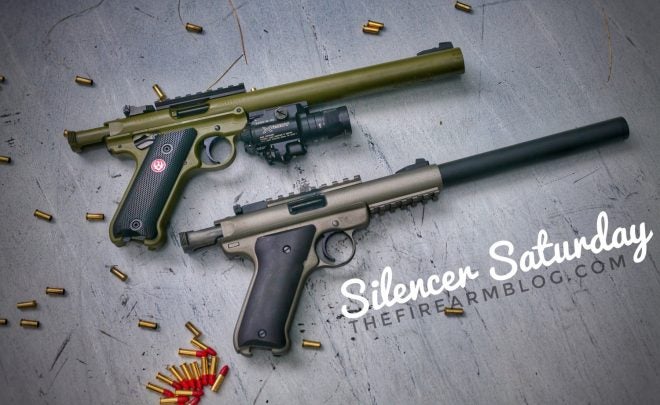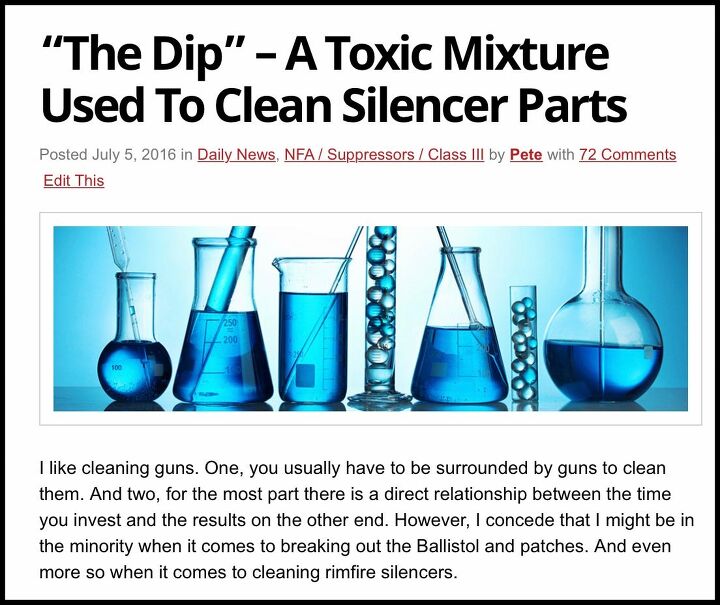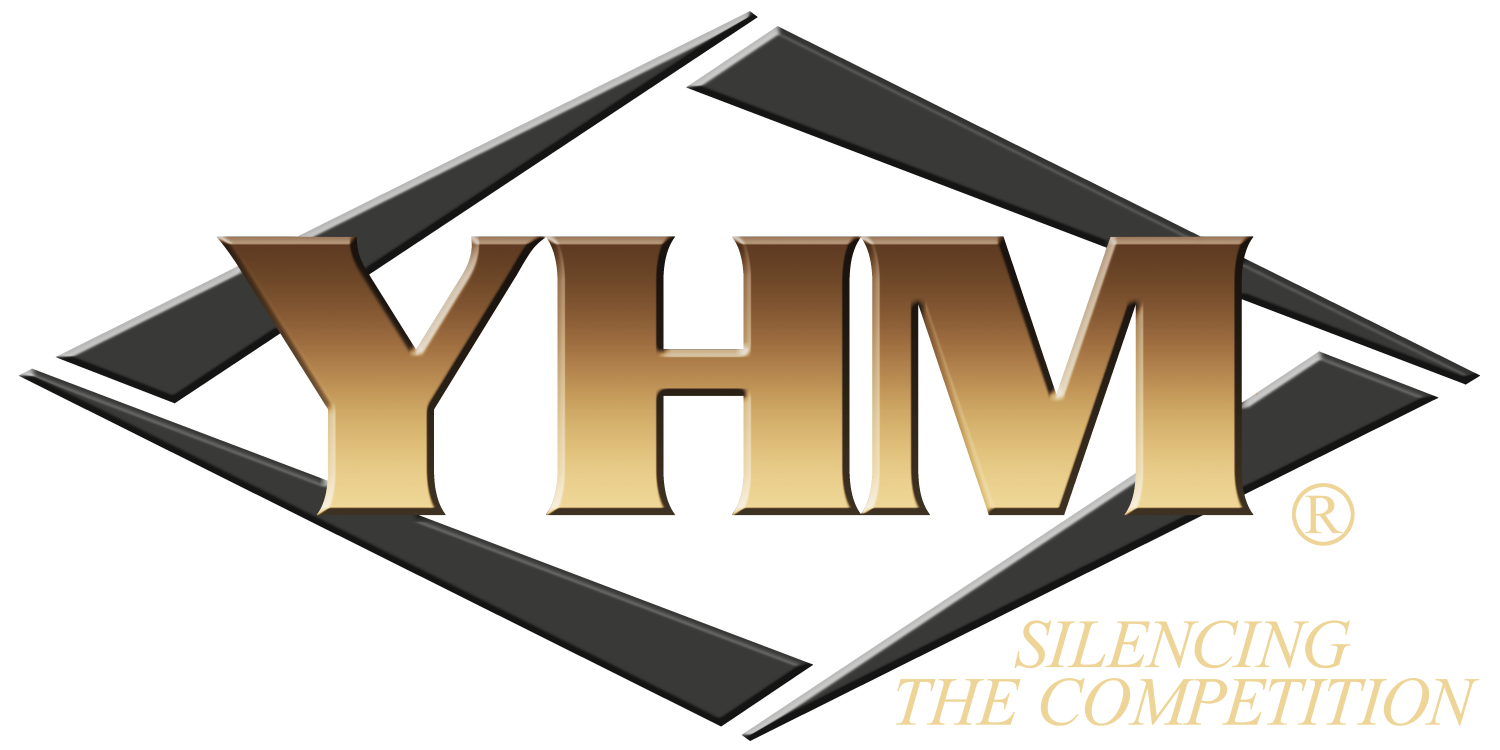Good afternoon everyone and welcome back to TFB’s Silencer Saturday. Last week we unboxed the Dead Air Wolfman 9mm modular silencer. We’ll have a range review of the Wolfman and the YHM Turbo K here in the next few weeks. There’s a chance I’ll break the two reviews out into standalone posts on the blog. If so, I’ll make sure to drop links into next Saturday’s post. This week we are talking about dirty rimfire and keeping your silencer clean. Dirty, dirty rimfire. I love suppressing you so much, but damn you make my cans filthy. Read that in whatever tone you deem fit.
SILENCER SATURDAY #80: Dirty Rimfire; Clean Suppressor
The problem with shooting dirty rimfire rounds is that, if you do it enough, you will end up spending a solid amount of time at the cleaning bench. Luckily for us, manufacturers have perfected baffle stacks and monocore designs to be shielded from that dirty rimfire debris that can practically weld a silencer shut. Gone (mostly) are the days of using a pipe to pound out baffles after a few thousand rounds. Click together baffles and clamshell sleeves have really helped the dirty rimfire cleaning process.
But after disassembly, the shooter is still left with a mess. Let’s take a look at some cleaning options.
- “The Dip” – We have discussed the chemical composition of the dip solution in prior articles (almost three years ago to the day) and the dangers of using it to clean your silencers. Although it is simple to make with household products, it is not something I can ever recommend to shooters due to the probability of harmful lead toxicity and potential environmental contamination.
- Ultrasonic Cleaner – We have also discussed using an ultrasonic cleaner to rid your suppressors of unwanted build up. And for the most part they are fantastic if used properly. The major downside is that materials like aluminum and some finishes and coatings can be eroded by the ultrasonic pulses and liquid cleaners. Make sure your silencer can handle the bath. When in doubt, contact the manufacturer for guidance.
- Solvents And Elbow Grease – The old standby of brushing with solvents is still my favorite. In the vein of self protection, I prefer to use a less harmful solution like Ballistol which is listed as being made from non-toxic components that are not harmful to humans. The downside is that the elbow grease methods can take twice as long as more aggressive cleaning methods.
As preventative treatment prior to shooting, I like to coat the baffles and tube liberally with some CLP. It helps to make a quicker cleanup.
Getting to the root of the problem
For a variety of reasons – functionality, manufacturing, costs – 22LR ammunition is not jacketed like most modern bullets. Jackets of soft metal like copper alloys help to encapsulate the heavier lead core which preserves bullet integrity and keeps lead out of rifling. However, the best “jackets” we see in the 22LR rimfire world are barely a plating and more like a wash that coats the lead with a thin layer of copper. The result is that the rifling cuts through the plating down in to the lead core.
However, another source of deposits or residue from .22LR rimfire ammunition can be attributed to burned and unburned powder, leaving shooters with a double whammy of mess that takes only a few hundred rounds to start causing problems.
CCI has just debuted a new series of .22lr ammunition that has a polymer coating that keeps the lead away from your suppressor.
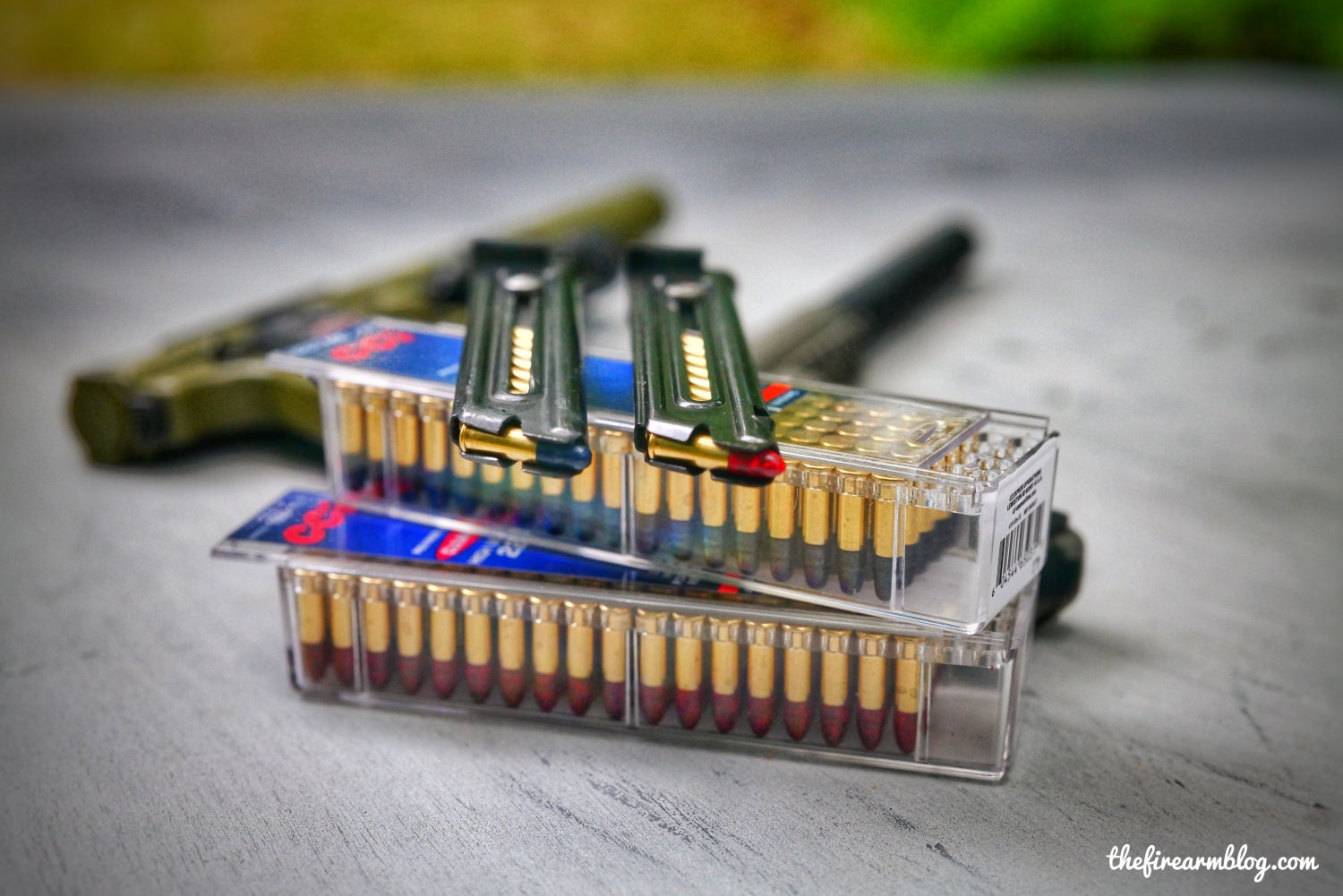
CCI Clean-22 Subsonic 22LR
- Polymer bullet coating greatly reduces lead fouling in the barrel without leaving residue
- Cuts lead buildup in suppressors 60 to 80 percent
- 40-grain lead round nose bullets—red for High Velocity, blue for Sub-Sonic
- Optimized bullet geometry for improved accuracy
- Reliable function in semi-automatic firearms
- Great option both casual and competitive shooters
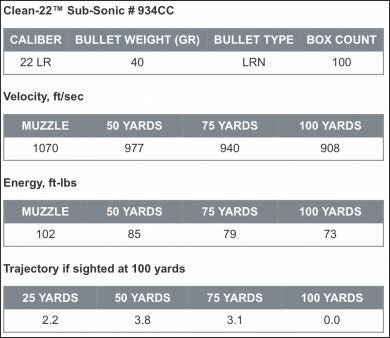
CCI Clean-22 High Velocity 22LR
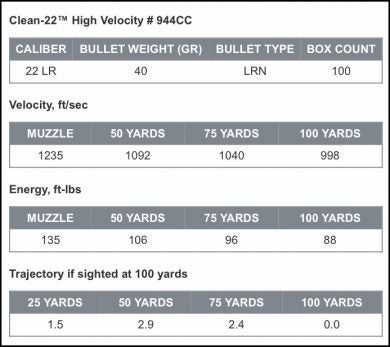
Dirty Rimfire; Clean Suppressor – Testing
Being as this is the beginning of a long term test, I started out with two clean and dry silencers. I left out my normal coat of CLP pre-treatment to avoid any additional variables. The two test setups are:
- Ruger MKIV Integral – TBA Suppressors Sicario
- Ruger MKIII with CZUSA Rimfire suppressor
I chose the TBA integral because of the barrel porting and monocore design. I chose the CZUSA Rimfire suppressor because of the unique screw in baffles. We did an initial unboxing and overview a few months ago. Let’s take a look at each of them while the are still clean.
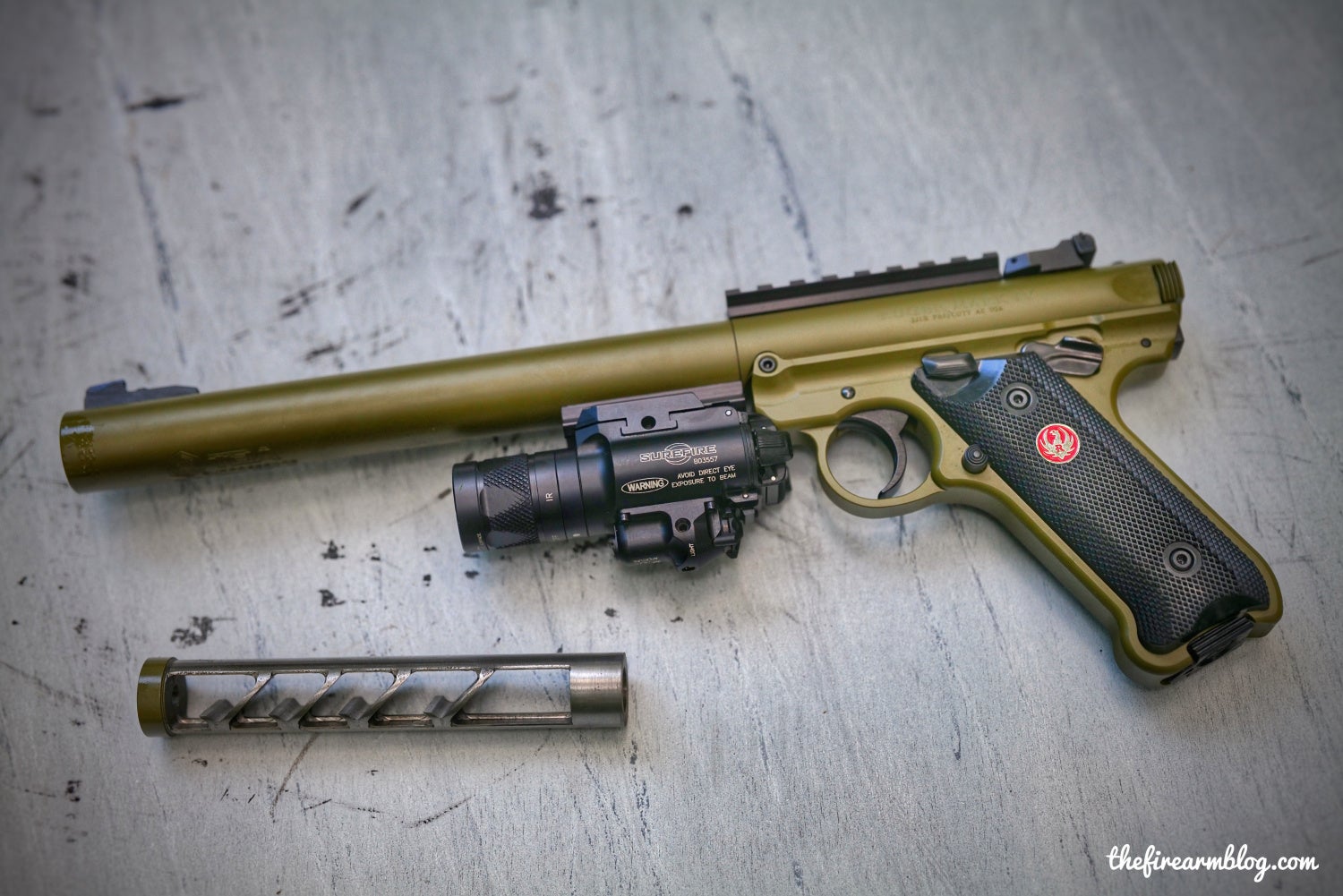
TBA Suppressors MKIV Integral
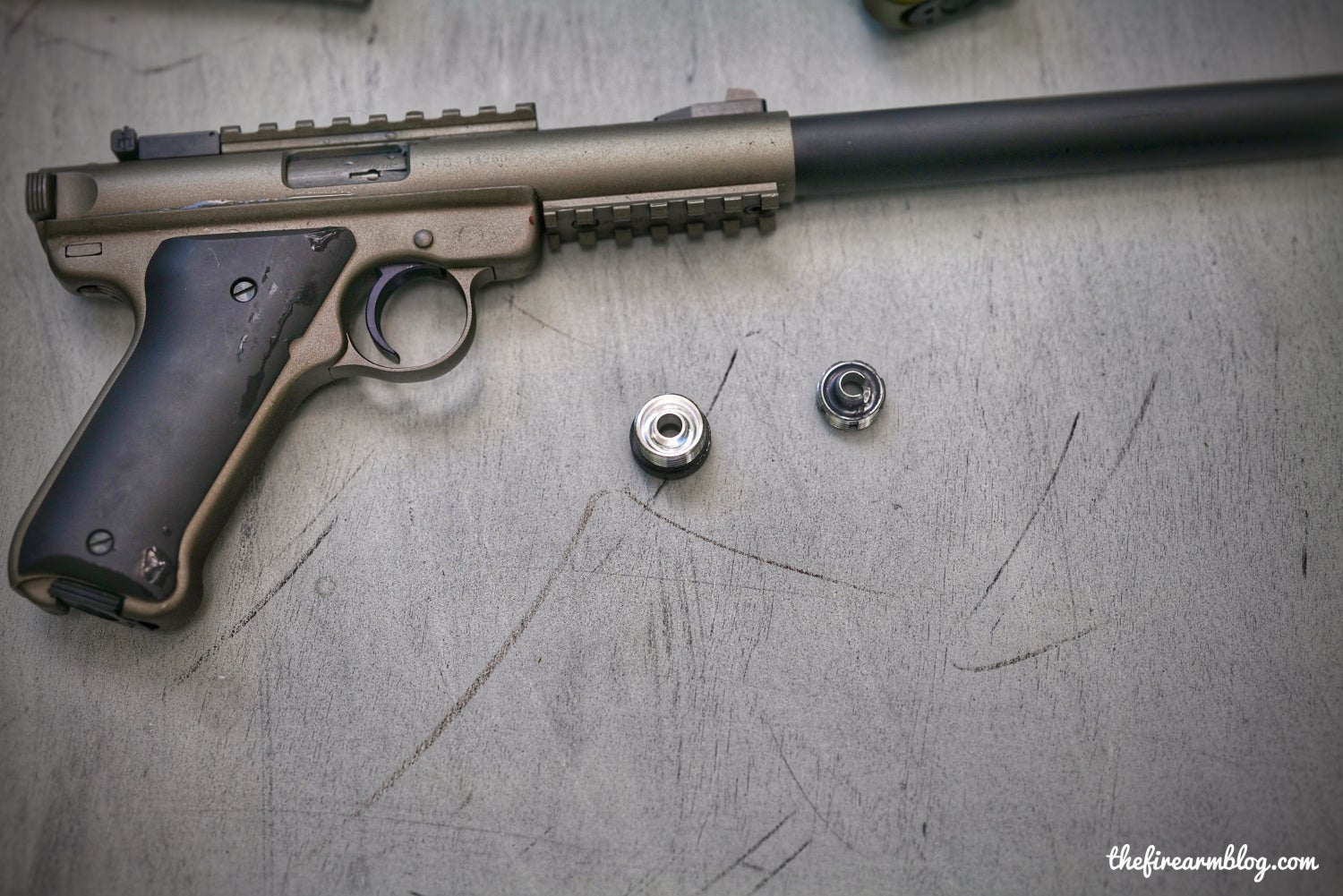
CZUSA Rimfire
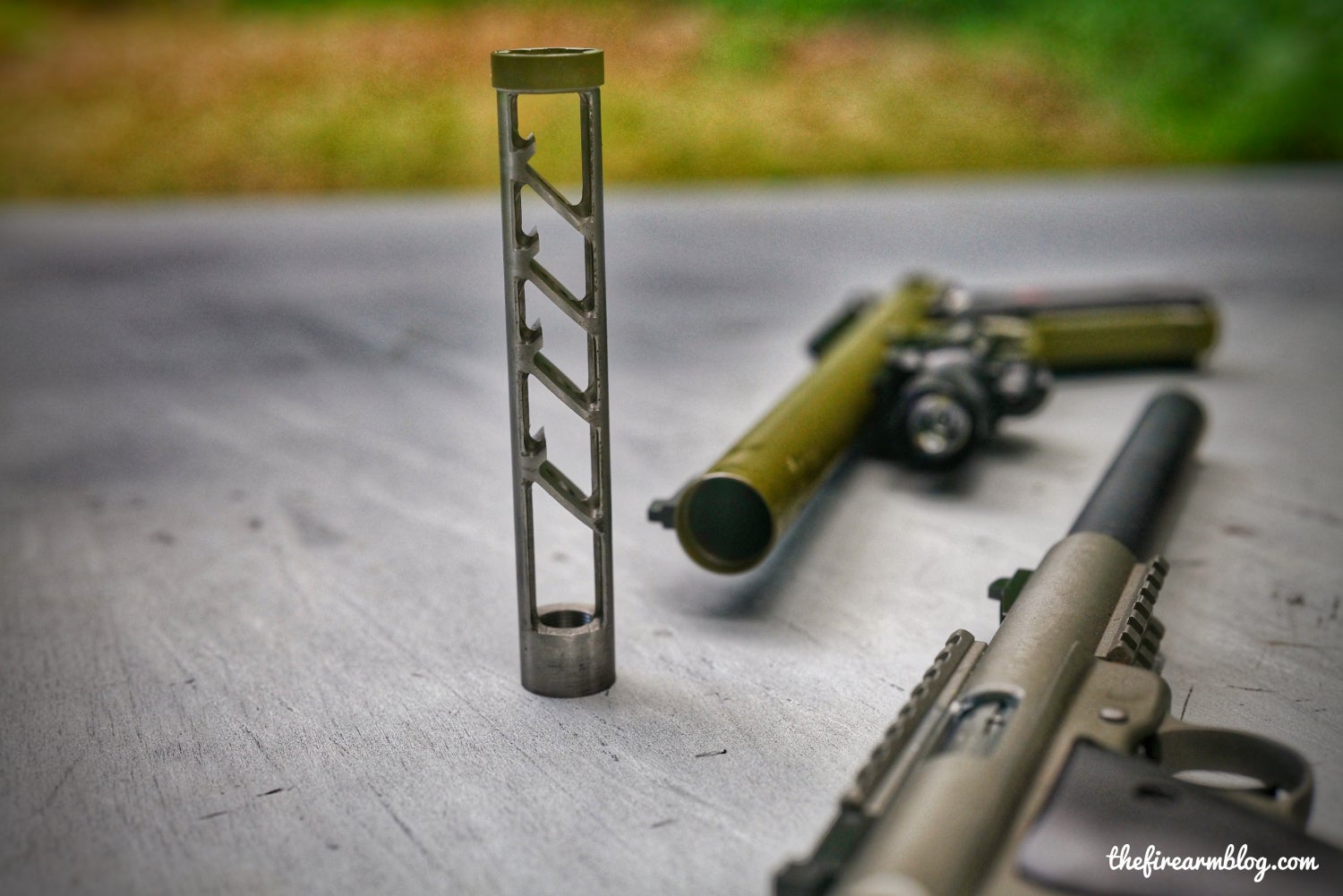
TBA Suppressors MKIV Integral
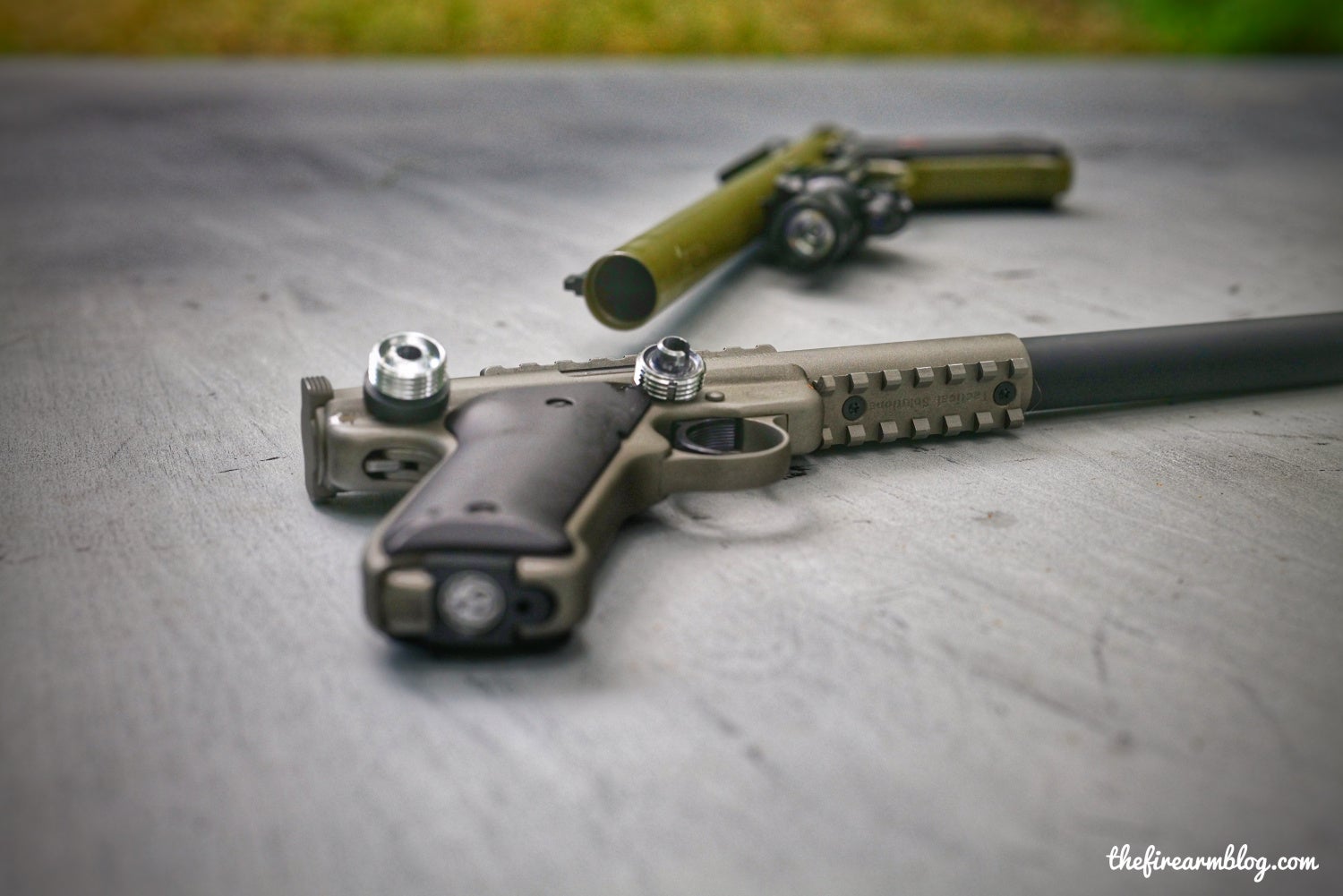
CZUSA Rimfire
Initial Observations:
Each setup has seen 400 rounds of the CCI Clean-22 rimfire ammunition down the barrel (high velocity for the MKIV integral and subsonic for the CZUSA silencer). Unfortunately, I got caught in a heavy thunderstorm during filming at the range and only have images of the CZUSA baffles at this stage. Here are my initial observations:
- At 400 rounds of CCI Clean-22 subsonic , the CZUSA baffles were visually as dirty as normal .22lr rimfire ammunition.
- Although the baffles were dirty, they wiped fairly clean without the use of any solvents. (I’m leaving the first two baffles untouched for the duration of the test).
- The CZUSA baffles unscrewed from the core easily without the need for any solvent.
- All the CCI Clean-22 subsonic rounds stayed subsonic in the MKIII host.
- The CCI Clean-22 high velocity stayed subsonic in the TBA integral.
- I had zero failures to fire/failures to feed in the MKIV
- I had approximately one failure to feed for every 20 rounds in the MKIII host, which is most likely due to a dirty, dry action.
- The TBA monocore was dirty, but I did not try to wipe away any residue.
- Initial accuracy testing was adequate – minute of squirrel on six inch steel targets. At the conclusion of the test, I’ll use a rifle host for some measurable data.
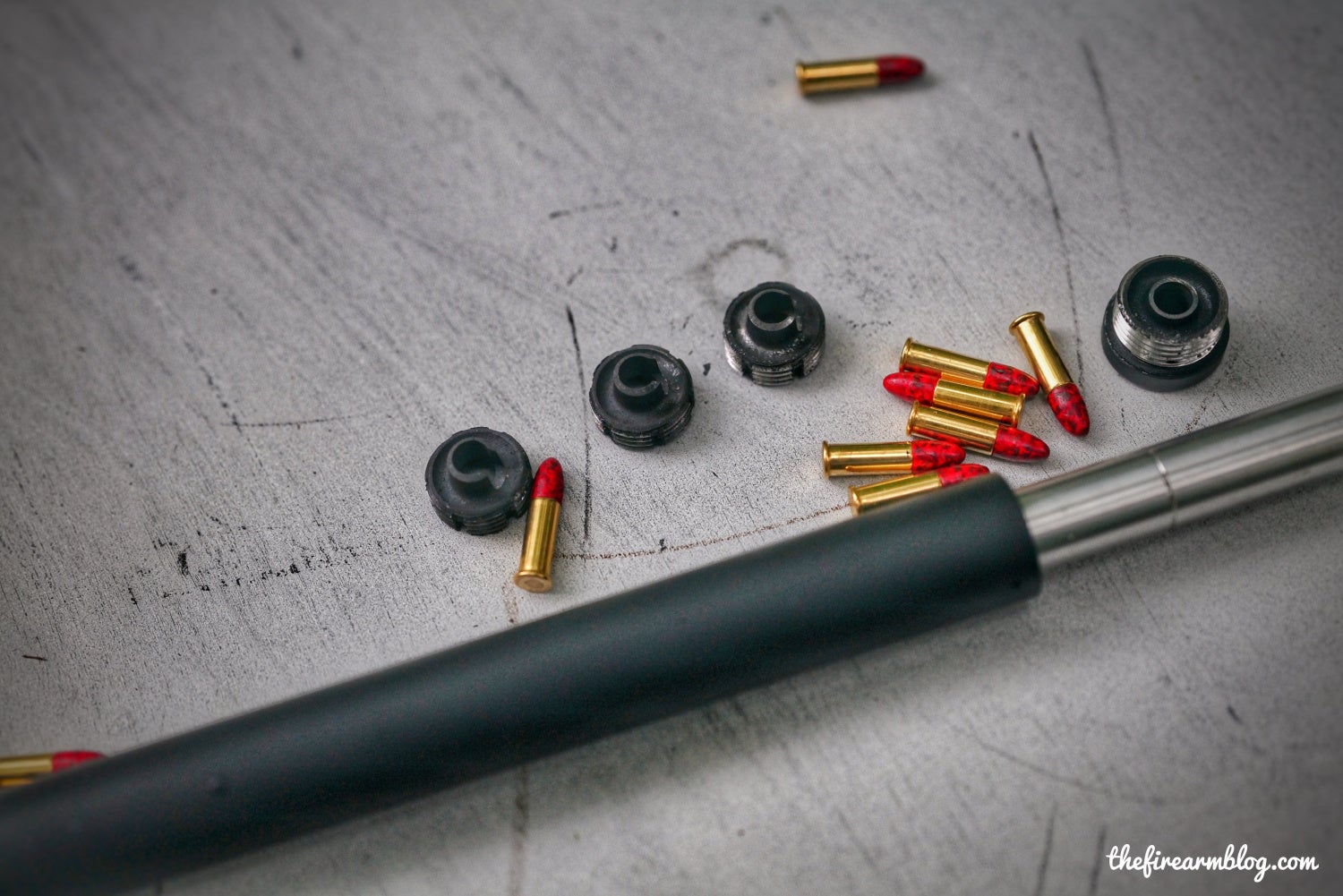
CZUSA unique screw in baffles.
Let’s see how many rounds I can get through the suppressors by the end of the summer (or when CZUSA wants their silencer back). So far, while the CCI Clean-22 ammo looks as dirty as other types of .22lr ammo, it cleans up easier due to reduced lead fouling. More dirty rimfire to come in future editions of TFB’s Silencer Saturday.
Be safe, have fun and we’ll see you next week.
Silencer Saturday is Sponsored by Yankee Hill Machine:
Buy YHM silencers and accessories at:
Silencer Shop – Hansohn BrOthers – dead eye gun supply –
Mac tactical
All YHM Products At Brownells
DEALERS: If you want your link to buy YHM suppressors included in future Silencer Saturday posts, email: silencers@thefirearmblog.com
Published on Jun 28, 2019 – TFB TV
In this “Guns of SOCOM” episode of TFBTV, James Reeves reviews the SIG P226 Mk25 “Navy” edition from Sig Sauer. James further discusses the history behind the SIG P226 Mk25 “Navy” (and its predecessor, the Mk24) and the history of the Navy SEALs’ selection of the P226 Mk24 and Mk25 as the sidearm for the elite unit.
««« PATREON GIVEAWAYS »»»
TFBTV is giving away one gun per month to a randomly selected $5-level (and higher) Patreon supporter. All Patreon supporters at a $5 monthly giving level and higher are automatically entered into the competition. Only valid where legal, and if the giveaway isn’t legal in your jurisdiction, you will be given cash in the amount of half of the MSRP of the giveaway prize.
-We are giving away ONE Blue Alpha Gear belt a month to one randomly selected $1-level (and higher) contributor AND another Blue Alpha Gear belt a month to one randomly selected $2-level (and higher) contributor.
PLEASE check out our Patreon page if you enjoy our program, and consider helping us at TFBTV out!
 Your Privacy Choices
Your Privacy Choices
